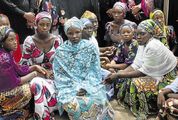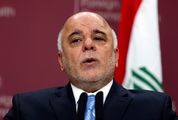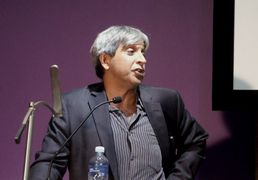South Africa on a growth curve different from Nigeria
by Michael Lalor,
2014-04-11 05:20:07.0
THIS week’s news that Nigeria’s gross domestic product (GDP) is higher than South Africa’s has generated significant debate locally, with some commentators inferring that the news will have a negative effect on investor sentiment and that it is further evidence that South Africa’s economy is sliding backwards.
As the rebasing of Nigeria’s GDP has been signalled for a long time, the result is not surprising; however, the statistical recalculation of the size of the Nigerian economy must be looked at in context.
The Nigerian economy has not grown by about 80% overnight. To calculate GDP, government statisticians use the price of goods and services from a "base year" as a point of reference. As this base year gets older, and the structure of any dynamic economy changes, so the GDP calculation will become more inaccurate. For this reason, South Africa recalculates the base every five years. In contrast, the previous Nigerian base year was 1990, so what we are seeing is a realignment with reality.
Questions whether this statistical calculation can provide an indication of the quality of the economy can be answered by the fact that South Africa’s GDP is about the same size as Austria’s; it is larger than Denmark and Finland’s; it is twice the size of Ireland’s and almost three times the size of New Zealand’s. The size of GDP taken into account with the structure and character of South Africa’s economy is very different from these so-called developed economies. Similarly, South Africa’s economy is at a very different point on the developmental curve from Nigeria’s — their infrastructure, financial systems, manufacturing capabilities, quality of services, retail markets and income levels, to name some of the relevant factors, are incomparable.
In terms of relative investment attractiveness, we are very positive about Nigeria and, for us, the GDP rebasing (and continuing growth of the economy) simply reinforces the investment proposition. But investment attractiveness is about far more than the size and growth rates of an economy. One has to weigh up the potential rewards against the risks and challenges to doing business. On any kind of objective risk-versus-reward opportunity analysis of African markets, South Africa will be among the best-positioned markets for the foreseeable future. This is why South Africa remains by far the leading destination for greenfield foreign direct investment (FDI) in Africa, attracting almost 25% of all projects into sub-Saharan Africa since 2007 (compared with 9% for Nigeria).
However, as Africans, we feel that there is a real danger in creating a false sense of competition between two of Africa’s powerhouse economies. This kind of narrative serves to further entrench the historical marginalisation of Africa’s still fragmented markets, and is damaging in the context of repositioning Africa as a regional destination for investment. This is a critical point, because as much as nations compete for investment, so do regions and, despite improving perceptions, Africa does still have much ground to make up relative to other regions.
With the shifting dynamics in the global economy, we believe Africans have a unique opportunity to break the structural constraints that have long marginalised the continent. However, this will be achieved only by fashioning greater regional coherence from the present patchwork quilt of 54 sovereign states. Among other things, this will require strong regional hub economies that can drive the creation of markets with greater critical mass, coherence and density of economic activity.
South Africa’s own long-term economic growth prospects could be inherently linked to this integration process. Access to expanding consumer markets across Africa could be a critical driver for South Africa’s economy, which is now essentially consumer driven. It is no coincidence, therefore, that investment by South African companies in FDI projects in the rest of Africa has grown at a compound rate of more than 40% since 2007. Companies headquartered in South Africa have invested in the second-largest number of FDI projects in Nigeria over that period, particularly in consumer-facing sectors such as retail, consumer products, financial services and telecommunications.
Ultimately, the rebasing of Nigeria’s economy simply confirms its status as a dynamic growth market. It reinforces the broader African growth story and positions Nigeria and South Africa as complementary regional economic and investment hubs for West Africa and Southern Africa respectively. This is reason for celebration, rather than angst.
• Lalor is leader of the EY Africa Business Centre.

GROWING TIES: South African President Jacob Zuma, left, is welcomed by Nigerian President Goodluck Jonathan on arrival at State House in Abuja, Nigeria, in April last year. Picture: GCIS
THIS week’s news that Nigeria’s gross domestic product (GDP) is higher than South Africa’s has generated significant debate locally, with some commentators inferring that the news will have a negative effect on investor sentiment and that it is further evidence that South Africa’s economy is sliding backwards.
As the rebasing of Nigeria’s GDP has been signalled for a long time, the result is not surprising; however, the statistical recalculation of the size of the Nigerian economy must be looked at in context.
The Nigerian economy has not grown by about 80% overnight. To calculate GDP, government statisticians use the price of goods and services from a "base year" as a point of reference. As this base year gets older, and the structure of any dynamic economy changes, so the GDP calculation will become more inaccurate. For this reason, South Africa recalculates the base every five years. In contrast, the previous Nigerian base year was 1990, so what we are seeing is a realignment with reality.
Questions whether this statistical calculation can provide an indication of the quality of the economy can be answered by the fact that South Africa’s GDP is about the same size as Austria’s; it is larger than Denmark and Finland’s; it is twice the size of Ireland’s and almost three times the size of New Zealand’s. The size of GDP taken into account with the structure and character of South Africa’s economy is very different from these so-called developed economies. Similarly, South Africa’s economy is at a very different point on the developmental curve from Nigeria’s — their infrastructure, financial systems, manufacturing capabilities, quality of services, retail markets and income levels, to name some of the relevant factors, are incomparable.
In terms of relative investment attractiveness, we are very positive about Nigeria and, for us, the GDP rebasing (and continuing growth of the economy) simply reinforces the investment proposition. But investment attractiveness is about far more than the size and growth rates of an economy. One has to weigh up the potential rewards against the risks and challenges to doing business. On any kind of objective risk-versus-reward opportunity analysis of African markets, South Africa will be among the best-positioned markets for the foreseeable future. This is why South Africa remains by far the leading destination for greenfield foreign direct investment (FDI) in Africa, attracting almost 25% of all projects into sub-Saharan Africa since 2007 (compared with 9% for Nigeria).
However, as Africans, we feel that there is a real danger in creating a false sense of competition between two of Africa’s powerhouse economies. This kind of narrative serves to further entrench the historical marginalisation of Africa’s still fragmented markets, and is damaging in the context of repositioning Africa as a regional destination for investment. This is a critical point, because as much as nations compete for investment, so do regions and, despite improving perceptions, Africa does still have much ground to make up relative to other regions.
With the shifting dynamics in the global economy, we believe Africans have a unique opportunity to break the structural constraints that have long marginalised the continent. However, this will be achieved only by fashioning greater regional coherence from the present patchwork quilt of 54 sovereign states. Among other things, this will require strong regional hub economies that can drive the creation of markets with greater critical mass, coherence and density of economic activity.
South Africa’s own long-term economic growth prospects could be inherently linked to this integration process. Access to expanding consumer markets across Africa could be a critical driver for South Africa’s economy, which is now essentially consumer driven. It is no coincidence, therefore, that investment by South African companies in FDI projects in the rest of Africa has grown at a compound rate of more than 40% since 2007. Companies headquartered in South Africa have invested in the second-largest number of FDI projects in Nigeria over that period, particularly in consumer-facing sectors such as retail, consumer products, financial services and telecommunications.
Ultimately, the rebasing of Nigeria’s economy simply confirms its status as a dynamic growth market. It reinforces the broader African growth story and positions Nigeria and South Africa as complementary regional economic and investment hubs for West Africa and Southern Africa respectively. This is reason for celebration, rather than angst.
• Lalor is leader of the EY Africa Business Centre.























Change: -0.47%
Change: -0.57%
Change: -1.76%
Change: -0.34%
Change: 0.02%
Data supplied by Profile Data
Change: -1.49%
Change: 0.07%
Change: -0.47%
Change: 0.00%
Change: 0.04%
Data supplied by Profile Data
Change: 0.43%
Change: 1.16%
Change: 0.65%
Change: 0.15%
Change: 1.17%
Data supplied by Profile Data
Change: 0.02%
Change: -0.63%
Change: 0.00%
Change: -1.22%
Change: -0.87%
Data supplied by Profile Data